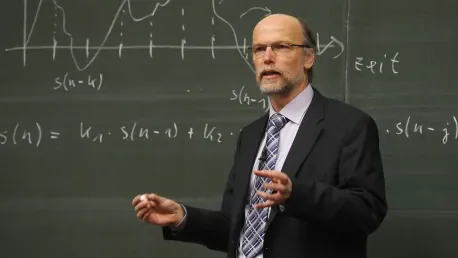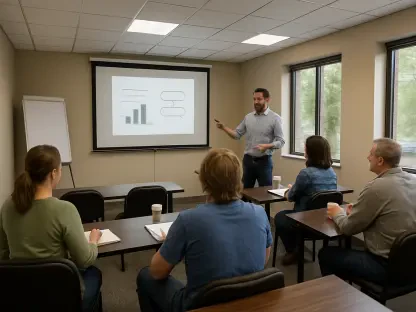The University of Akron is currently grappling with significant financial challenges, prompting the administration to propose cuts to academic programs and faculty positions. These measures are driven by declining enrollments and the need for reorganization. However, in a bid to avoid such drastic steps, the university has extended the deadline for departments to suggest alternative solutions aimed at enhancing revenue and reducing costs. The collaboration between different departments and the administration underscores the importance of a unified effort to secure the university’s financial health and maintain the quality of education.
Agreement to Extend Deadline for Proposals
On December 18, University of Akron President R.J. Nemer and Toni Bisconti, president of the Akron chapter of the American Association of University Professors, reached an agreement to extend the deadline for departments to submit their counter-proposals. Originally set for January 13, the new deadline is now March 3, providing departments additional time to develop innovative strategies that could potentially avert job losses. The extension has been a crucial step in allowing various departments to brainstorm and collaborate on sustainable solutions that address the financial issues at hand.
The agreement also calls for all academic units across the university, not just those directly affected by the proposed cuts, to contribute proposals aimed at improving the university’s financial health. This inclusive approach is intended to foster a collaborative effort in finding viable solutions. By involving the entire academic community, the university aims to harness a diverse range of perspectives and expertise, thereby increasing the likelihood of identifying effective strategies to enhance revenue and reduce costs.
Background of Financial Challenges
The financial difficulties facing the University of Akron were highlighted by President Nemer on November 19 when he announced the initiation of the retrenchment process. Factors such as declining enrollments and the need for restructuring were cited as reasons for the proposed cuts. The current proposal potentially affects over 30 faculty positions across eight departments, including Art, History, Electrical and Computer Engineering, Chemistry, Chemical, Biomolecular and Corrosion Engineering, Anthropology, Physics, and Polymer Science and Polymer Engineering. These proposed cuts would necessitate significant adjustments and efficiencies within the affected departments.
The administration’s goal is to find ways to sustain the university’s operations while minimizing the impact on faculty and academic programs. The substantial number of affected positions signifies the depth of the financial crisis, and the university’s attempt to navigate these challenges emphasizes the need for cooperation and innovative thinking. Understanding the specific factors contributing to the financial strain is essential for developing targeted and effective solutions.
Emphasis on Shared Governance
Toni Bisconti praised the agreement to extend the deadline as a model for shared governance. She emphasized the joint responsibility of university stakeholders to find ways to sustain the institution’s operations. Increasing enrollment is seen as a crucial strategy to avoid retrenchment, and cooperative efforts are essential to maintaining the university’s longevity. Although no formal proposals have been presented to the committee yet, President Nemer and Provost John Wiencek are keen on exploring creative solutions that can replace the need for faculty reductions.
Nemer aims to minimize retrenchment by encouraging voluntary separations and exploring academic solutions that could enhance enrollment through new programs or initiatives. The administration’s openness to innovative ideas reflects a commitment to preserving jobs and academic quality, even in the face of financial adversity. This collaborative approach ensures that the voices of faculty and other stakeholders are heard, fostering a sense of collective responsibility and shared ownership of the solutions.
Incentivizing Voluntary Departures
The agreement mentions the success of a university program designed to incentivize voluntary faculty departures. Both the president and the union are keen on securing additional separation agreements as part of their broader strategy. In their joint statement, Nemer and Bisconti highlighted their commitment to working collaboratively to restore The University of Akron’s financial stability. The union believes that expanding the call for proposals across the entire campus, rather than limiting it to impacted departments, increases the odds of generating innovative solutions to increase revenue and decrease expenses.
This sentiment underscores the importance of collective action in addressing the university’s financial problems. Faculty members in the union’s bargaining unit will receive a survey to submit their proposals, which the retrenchment committee will review between March 3 and April 1. On April 4, the committee will present its recommendations, focusing on identifying methods to raise funds, reallocate resources, or cut or eliminate specific activities or positions. The extended deadline not only allows more time for proposal development but also aligns with the university’s vision of a community-driven approach to problem-solving.
Process for Reviewing Proposals
The letter to faculty expressed hope that the extension would yield effective solutions to help The University of Akron move forward with minimal disruption to the campus community. Additionally, the extended deadline allows the committee to better assess the university’s financial status, evaluate potential savings from voluntary separations, and consider solutions from visioning groups appointed by Nemer. The extension also takes some pressure off leaders to develop solutions over the winter holidays.
Bisconti expressed satisfaction with the ease of securing the extension. If retrenchment remains necessary after considering the proposals from other departments, affected faculty members will be notified by April 25, a delay from the original March 15 notification date. The proactive approach in extending the deadline and seeking comprehensive solutions highlights the university’s commitment to thoughtful and strategic decision-making. By carefully reviewing all proposals, the committee aims to identify the most effective and least disruptive methods to secure financial stability.
Anticipation for Alternative Proposals
The University of Akron is facing substantial financial difficulties, which has led the administration to consider making cuts to specific academic programs and faculty positions. These potential cuts are due to declining student enrollments and the necessity for structural reorganization. However, to prevent taking such severe measures, the university has extended the deadline for departments to propose alternative strategies focused on generating additional revenue and cutting down expenses. This effort highlights the critical need for collaboration between various departments and the administration. Such cooperation is essential to secure the university’s financial stability and ensure the continued quality of education. By working together, the goal is to identify viable solutions that can sustain the academic institution’s growth and support its mission to provide high-quality education for its students. The administration is hopeful that these collective efforts will yield innovative approaches that effectively address the financial challenges while preserving the university’s academic integrity and operational efficiency.








